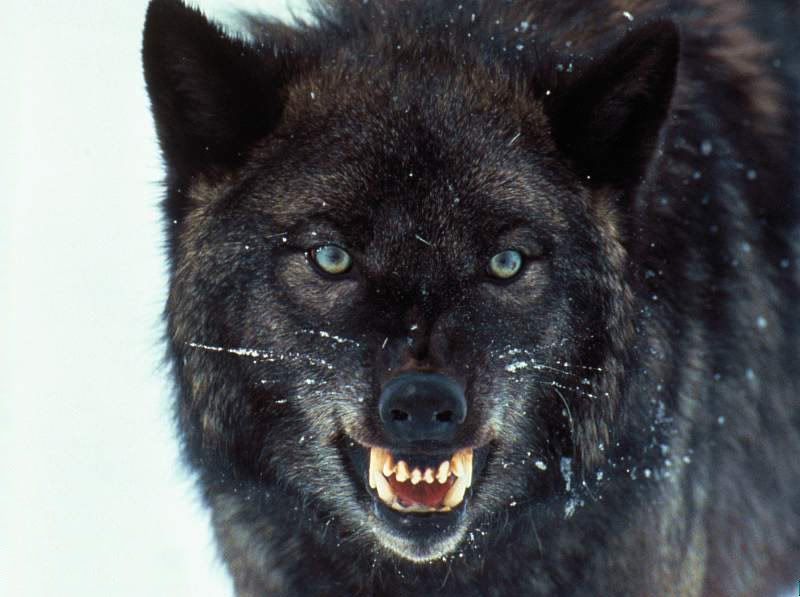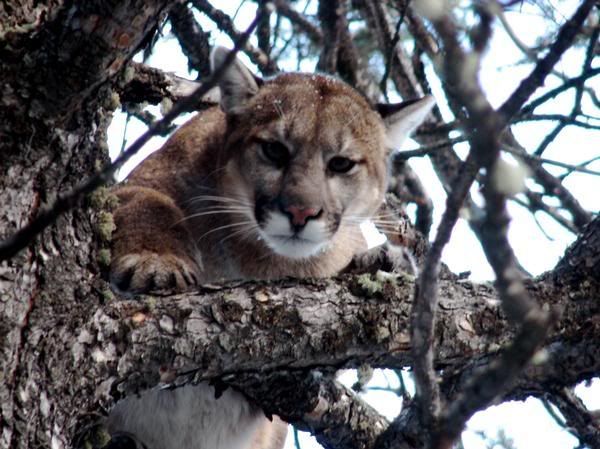
Below is an article published by Ms. McDonald regarding California mountain lions. I will refute the declarations of Ms. McDonald, then you may read on and decide for yourself:
The first thing people should know about mountain lions is: they are predators and are lethal killers and one should never assume safety when in lion country. The risk of a human-lion encounter and hence of loss of life is growing.
Next, mountain lions are the primary reason that mule deer have declined and have not been able to recover.
Mountain lions are not an essential part of the ecological web. Man is able to regulate prey populations without the aid of mountain lions. Mountain lions, by design, are a stop-gap measure.
Persons should be aware that they are many times being observed by lions without knowing it. If you actually see a lion, then first, there are too many, and second, prepare to defend yourself by any means possible.
Mountain lion habitat is mule deer. No, I didn’t say that wrong. Cougar “habitat fragmentation” is mule deer fragmentation. The largest threat facing mountain lions is overcrowding. In the Western United States there are already more lions than the available deer will support, so lions are turning to alternatives such as eating elk, preying on people, and moving east to eat whitetails.
Hunting, depredation, and vehicles do not threaten lions and lions are not threatened. Mule deer are threatened. When the lion population is down to about 5 percent of current numbers then possibly there may be a reason to say they are “threatened”. I’m talking about 1960’s numbers. And, as anyone can see, those numbers did not place cougars in jeopardy.
Mountain lions are quite at home in many populated areas of California, where they are known to prey on peoples’ pets. Although they would likely prefer the remote “wilds” , that is if there were sufficient prey, they don’t necessarily leave just because of human encroachment.
Until very recently, the population trend for mountain lions has been on the increase. The reason lion population increase has slowed in the West, is that further increase is prohibited by their territorial nature. So, if it is critical that we change course, and it is actually, then we need to begin drastically reducing mountain lion numbers.
According to the Director of the California Department of Fish and Game, California has more mountain lions than any Western State. And, why is that? Because, by proposition, California lions have been protected. No hunting allowed. Furthermore, if you work for animal damage control, you must catch the lion in the act and have no other alternative but to kill it. In essence, there are more lions being born in California than are being killed.
Regarding inter- and in-breeding: Since a male lion maintains a territory that overlaps only a few females, unless the male moves his territory, inbreeding is assured. So what? Male lions have been known to move hundreds of miles without regard to what they encounter on the journey. This is presumably in search of food, not in search of different females.
——————————————————
The Felidae Conservation Fund was founded by Zara McDonald to educate the public about wild cats, and how to conserve them. She was inspired to start the organization after two different encounters with mountain lions while running long distances on park trails in northern California. What follows is an interview with her about mountain lion behavior and protection.
What is the first thing people should know about mountain lions?
The first thing people should know about mountain lions is that they’re an essential part of the ecological web. As the keystone species, they play a key role in keeping the ecosystem balanced and healthy. When they are removed from a habitat, the health of the ecosystem declines as the biodiversity falls out of balance. The next first thing people should know about mountain lions is that humans are not on their menu, and the risk of being attacked by a mountain lion is very very low. For example, you’re 150 times more likely to be killed in a car collision with a deer.
If you see a mountain lion in the wild, what should you do? What should you not do?
You should never approach a mountain lion or make it feel threatened, or get between a mother and her cubs. At the same time, you should not run away or crouch down. Stand your ground, and allow the lion an escape route. It will most likely disappear before you can be sure that you even saw a mountain lion, making you doubt your own eyes.
What threats are they facing?
The biggest threat mountain lions face is habitat fragmentation which leads to loss of contiguous habitat and connectivity corridors that connect populations for genetic diversity. In California, they also face threats from depredation permits which sanction the action of killing a cat that has killed pets or other livestock. In the remaining states where lions live, hunting is a major threat. And in all states, the risk of being killed by a car while crossing a road is a major threat. All wild felids around the world are seriously threatened by human encroachment and loss of key habitat.
How secure is their future?
Mountain lions are a threatened species. While they are not in imminent danger of extinction, there have been many local extinctions, and the territory they inhabit has been steadily shrinking over the past 150 years. If the current trends continue, they will ultimately face extinction like so many other wild cats. It is critical that we change this course now, while there is still time.
How much space do they need?
Mountain lions have vast home ranges. The home range for a female is on average 50 square miles, and can be as much as 100 square miles. For a male the range is typically 80-100 square miles and can be as much as 200 square miles. In one research study a male puma that was being GPS monitored traveled over 1000 km over a few weeks.
How large do their populations have to be so there is not inbreeding, and related genetic diseases?
The main cause of inbreeding and loss of genetic diversity for mountain lions is habitat fragmentation. The mountain lion is a low density species. Therefore populations need to be spread out across large amounts of contiguous habitat to be healthy. Males will typically not share territory with other males, and will fight to the death in a territory dispute. Within a male’s home range there can be 2-3 females. Based on the size of their home ranges, this means that at full density there are only about 4-5 adult mountain lions per 100 square miles. This makes the mountain lion a ‘bellwether’ species, exhibiting the harmful effects of habitat fragmentation long before other species do.
Does the media portray them accurately, or in a sensationalistic way?
In some cases the media accurately portrays mountain lions and the challenges they face in a human-dominated landscape. In other cases, there is a more sensationalist approach that emphasizes fear and perceived danger. Felidae is working hard to send a balanced and accurate message out, and has had a great deal of success generating positive and informative stories in the media.
What is their main source of food?
Mountain lions are ‘generalist predators’ meaning they will eat anything from mouse to a moose. However in North America around 80 percent of a mountain lion’s diet consists of deer, and in South America there are animals similar to deer which also form the bulk of the mountain lion’s diet.
How often do they reproduce?
An adult female mountain lion is pregnant or raising young for 70 percent of her life. The gestation period after conception is about 90-92 days, and the young will stay with the mother for 18-24 months. A female will typically get pregnant within a year, and often significantly less, from the time her previous litter disperses. That puts the total reproduction cycle at around 2.5 to 3 years.
How can members of the public help make sure mountain lions survive?
The main thing that members of the public can do is to get informed and get involved, and to spread the word and help support conservation efforts. Felidae’s website, felidaefund.org is a great place to start. It provides a lot of information about upcoming lectures, and opportunities to volunteer, make a donation, attend an event, sign up for our mailing list, and connect to our Facebook and Twitter accounts. Also check out bapp.org to watch this exciting project build momentum, Learn about the Bay Area Puma Project and join us at an upcoming lecture in San Francisco at the Randall Museum on March 10th.









 In the summer of 1992, a young girl of nine years was attacked by a Utah black bear while she was sleeping in the camper on her grandparent’s truck. The girl’s name was Krystal Gadd and the attack occurred near Strawberry Reservoir. Krystal was mauled and scalped by the bear – and quite likely would not have survived had her grandfather not assaulted the bruin with a large flashlight. The bear was attempting to haul Krystal away while still inside her sleeping bag, but the sleeping bag got hung up on a barbed wire fence. Grandpa Gadd attributed his success at warding off the bear to an unseen spiritual presence.
In the summer of 1992, a young girl of nine years was attacked by a Utah black bear while she was sleeping in the camper on her grandparent’s truck. The girl’s name was Krystal Gadd and the attack occurred near Strawberry Reservoir. Krystal was mauled and scalped by the bear – and quite likely would not have survived had her grandfather not assaulted the bruin with a large flashlight. The bear was attempting to haul Krystal away while still inside her sleeping bag, but the sleeping bag got hung up on a barbed wire fence. Grandpa Gadd attributed his success at warding off the bear to an unseen spiritual presence.
